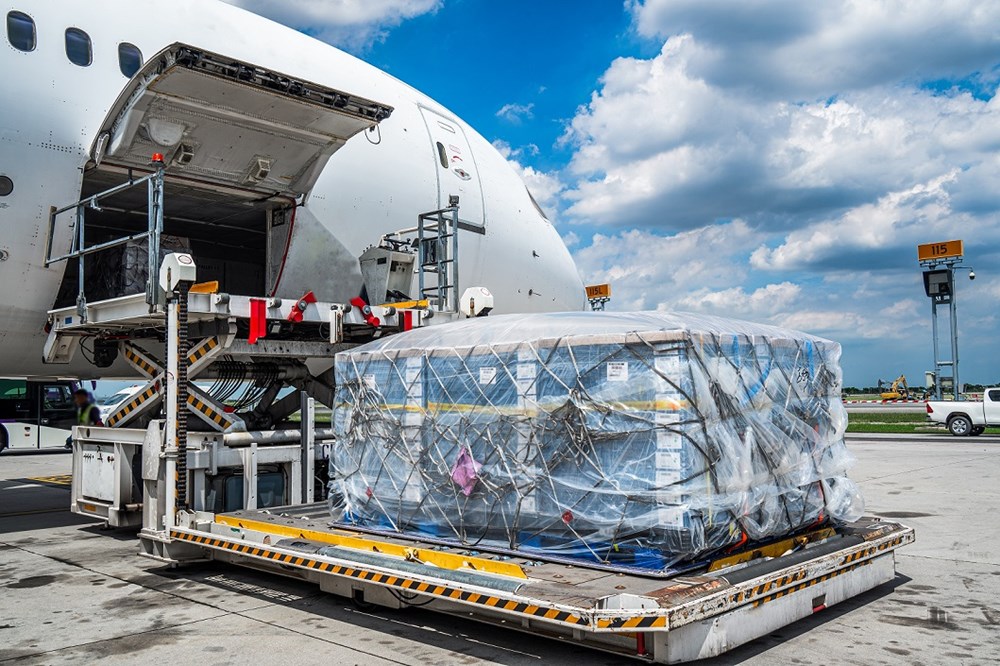Air Cargo Demand Grows in May Despite U.S.–China Trade Disruptions
1. Global Growth Amid Trade Tensions
According to the latest figures from IATA (International Air Transport Association), air cargo demand increased by 2.2% year-on-year in May, despite:
-
The U.S. implementing record-high tariffs of up to 145% on Chinese goods
-
And the termination of the de minimis exemption for low-value shipments from China
While available capacity rose by 2%, the cargo load factor improved slightly by 0.1 percentage points, reaching 44.5%.
However, this marks a slowdown in momentum, as the year-to-date growth for the first five months of 2025 stands at 3.2%.

2. Sharp Decline on the Asia–North America Lane
A key highlight is the 10.7% year-on-year decline in cargo volumes on the Asia–North America trade lane in May.
IATA attributes this drop to:
-
The end of “front-loading” effects before tariffs were imposed
-
And new U.S. policies removing the de minimis exemption for low-value imports
3. Strong Growth on Other Lanes Offsets the Drop
While the Asia–North America route declined, other trade lanes saw significant increases that offset the loss:
-
Asia–Europe: up 13.4%
-
Middle East–Asia: up 10.8%
-
Intra-Asia: up 9.1%
-
North America–Europe: up 8.2%
IATA noted: “As cargo flows reorganized, several trade routes saw surprising growth.”
4. IATA Response: Air Cargo Shows Resilience
IATA Director General Willie Walsh commented:
“The 2.2% global growth in May is encouraging, especially in light of the 10.7% decline on the Asia–North America lane due to shifting U.S. trade policy. The air cargo sector continues to demonstrate its agility and resilience, allowing shippers to adapt quickly by holding back, rerouting, or accelerating deliveries.”
5.US Impact of New U.S. Tariff Policies
In May:
-
The U.S. imposed tariffs up to 145% on imports from China
-
A temporary agreement later reduced tariffs to 30% for a 90-day window
This led to a surge in shipments to the U.S. as companies rushed to take advantage of the reduced rates or catch up on delayed cargo.
Meanwhile, the removal of the de minimis exemption means:
-
Shipments by commercial airlines are now taxed at 30%
-
Shipments via postal networks face a 54% tariff or a flat $100 fee
According to consulting firm Aevean, much of China’s e-commerce export demand shifted to alternative lanes to avoid high costs.
6. Global Economic Indicators Reflect Pressure
IATA also highlighted signs of economic strain:
-
The global manufacturing PMI fell to 49.1 in May, below the 50-point threshold that indicates growth
-
New export orders remained in contraction territory at 48, largely due to the impact of U.S. trade measures
7. Regional Performance – Asia Leads the Way
| Region | Demand Growth (YoY) | Capacity Growth (YoY) |
|---|---|---|
| Asia-Pacific | 🔼 8.3% | 🔼 5.7% |
| North America | 🔽 -5.8% | 🔽 -3.2% |
| Europe | 🔼 1.6% | 🔼 1.5% |
| Middle East | 🔼 3.6% | 🔼 4.2% |
| Latin America | 🔼 3.1% | 🔼 3.5% |
| Africa | 🔽 -2.1% | 🔼 2.7% |
Asia-Pacific saw the strongest growth in demand
North America posted the weakest performance, declining in both demand and capacity
Conclusion
Despite ongoing trade policy shifts and global economic uncertainty, air cargo continues to grow, supported by its operational flexibility and ability to adapt to changing flows. The rebound in non–Asia–North America routes demonstrates a realignment of global trade lanes, signaling a broader transformation in the movement of goods by air
Máy Bay Trượt Khỏi Đường Băng Tại Tân Sơn Nhất: Bí Mật Đằng Sau Sự Cố
An ninh hàng không dân dụng vẫn còn lỗ hổng, đặc biệt trên không gian mạng
Các Trung Tâm Hàng Không Lớn Nhất Tê Liệt Vì Xung Đột Ở Trung Đông

